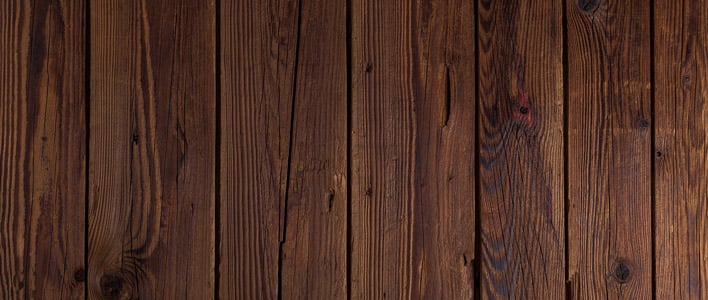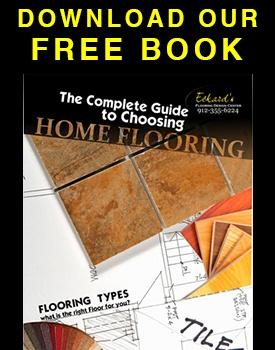What are my choices if I want a wooden (or wood-look) floor?
So you just decided you want to install hardwood flooring in your new, or ready-for-an-update, home. But now that you've started looking into it, you're overwhelmed with the choices! The three main types we deal with are laminate, engineered hardwood or solid hardwood. The advantages of selecting one over another is evolving and the decision isn’t as clear-cut as it was in the past. In order to make an informed decision, it is essential to understand the constitution of the flooring.
What is Laminate?
Laminate is not actual wood. Instead, it is made of synthetic fiberboard and a laminate finish. It is less expensive than other options, but also less durable. That said, laminate may also be more resistant to a number of intrusive influences, like moisture and staining. Laminate is comprised of four layers: a stabilizing layer and a layer of treated high-density fiberboard, which are covered with an imprinted image and a protective layer of melamine resin.
Strengths and Weaknesses: Laminate
Laminate is inexpensive. The price ranges from $1 to $8 for a square foot and is about 50% less for installation. Laminate is moderately resistance to water and the top layer is fairly resistant against scratching. Nevertheless, if moisture penetrates a lower layer, it may need a full replacement. The same goes for a deep scratch. Laminate cannot be refinished. That is why it is important to install laminate effectively and ensure none of the seams are exposed.
Laminate will keep for around ten years, after which point you will have to replace it. While a challenge to repair, laminate is easy to replace. The resale value is traditionally low, yet advances in imaging techniques are elevating the number. That said, if you look closely you will be able to tell it isn’t legitimate hardwood. You can also embed laminate in areas you are unable to fit your hardwood. Additionally, you can cover any surface with laminate because it is thinner.
What is Engineered Hardwood?
Engineered hardwood is a middle ground between laminate and solid hardwood, as is a bit of each. It is comprised of either plywood or high-density fibreboard (occasionally genuine hardwood) topped with a layer of hardwood veneer in order to give the appearance of actual hardwood. The veneer is usually between .083 and .25 inches thick. Engineered hardwood is made of up to nine layers.
Strengths and Weaknesses: Engineered Hardwood
Engineered hardwood is cheaper than solid hardwood and more expensive than laminate. You are only paying for a veneer of solid hardwood; the rest of the layers are comprised of other materials. While you save on a veneer, be sure to acquire a good one––if not, you risk fading and warping. Engineered hardwood can be applied to wood or concrete subfloors. It is usually able to resist more moisture than solid hardwood, but that may depend on the layers and their number.
The number and integrity of the layers will determine the price of your Engineered Hardwood installation. Expect an expense of $3 to $14 per square foot as well as a cheaper installation fee than for solid hardwood. The resale value of an engineered hardwood floor is considerably higher than it used to be, although it is not on par with that of a solid hardwood installation. You may only sand engineered hardwood a couple of times until it wears out.
What is Solid Hardwood?
Solid hardwood is 100% authentic wood. Accordingly, the value is a lot higher than its non-genuine counterparts. But don't fret-while it is more expensive, its resale value is also better. Natural wood in a solid hardwood is usually around three quarters of an inch in thickness. Unlike laminate and engineered hardwood, solid hardwood must be nailed into a wood subfloor. As a result, a lot of homeowners will be unable to use solid hardwood for a floor installation.
Strengths and Weaknesses: Solid Hardwood
Solid hardwood is an excellent choice if your home possesses the adequate environment and if you are willing to pay for a premium surface. It is far more durable than either of the alternatives and may last the entire time you live on it, if not more. Nevertheless, solid hardwood needs proper care and orientation. Never install solid hardwood in a high moisture setting––exposure will result in a swollen and expanded floor.
If you attend to a solid hardwood effectively, you benefit from a higher resale value than either of the other options. The cost of installation ranges from $8 to $15, but the price may go even higher if you use better quality and harder varieties of wood. The flipside of that expense is the better wood is its superior durability. Moreover, solid hardwood is the most repairable of the three. If you are looking for a long term investment, solid is the way to go.
As a result, the people of Savannah love a nice hardwood floor. Savannah is a good place for hardwood flooring because its natural aesthetic is reminiscent of Georgia Pine. Read our article about how to properly care for hardwood in Savannah, and how to prolong the life of your hardwood floor.



